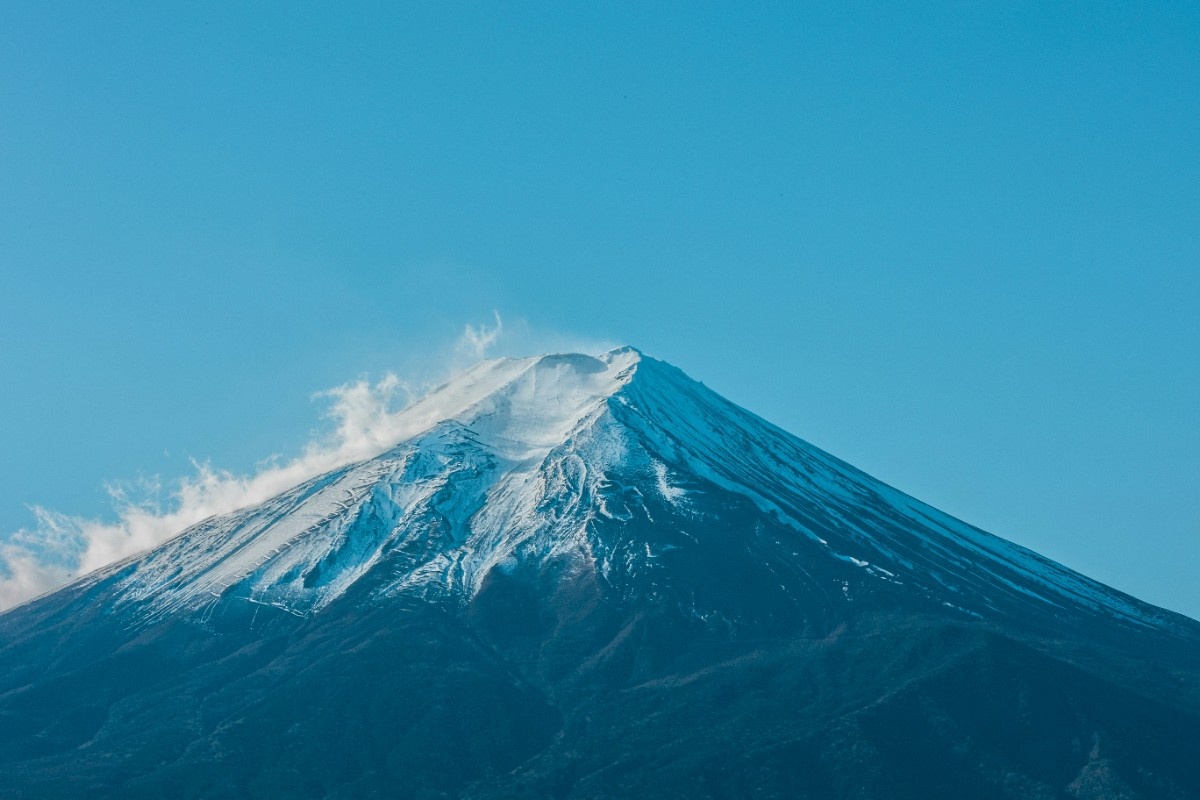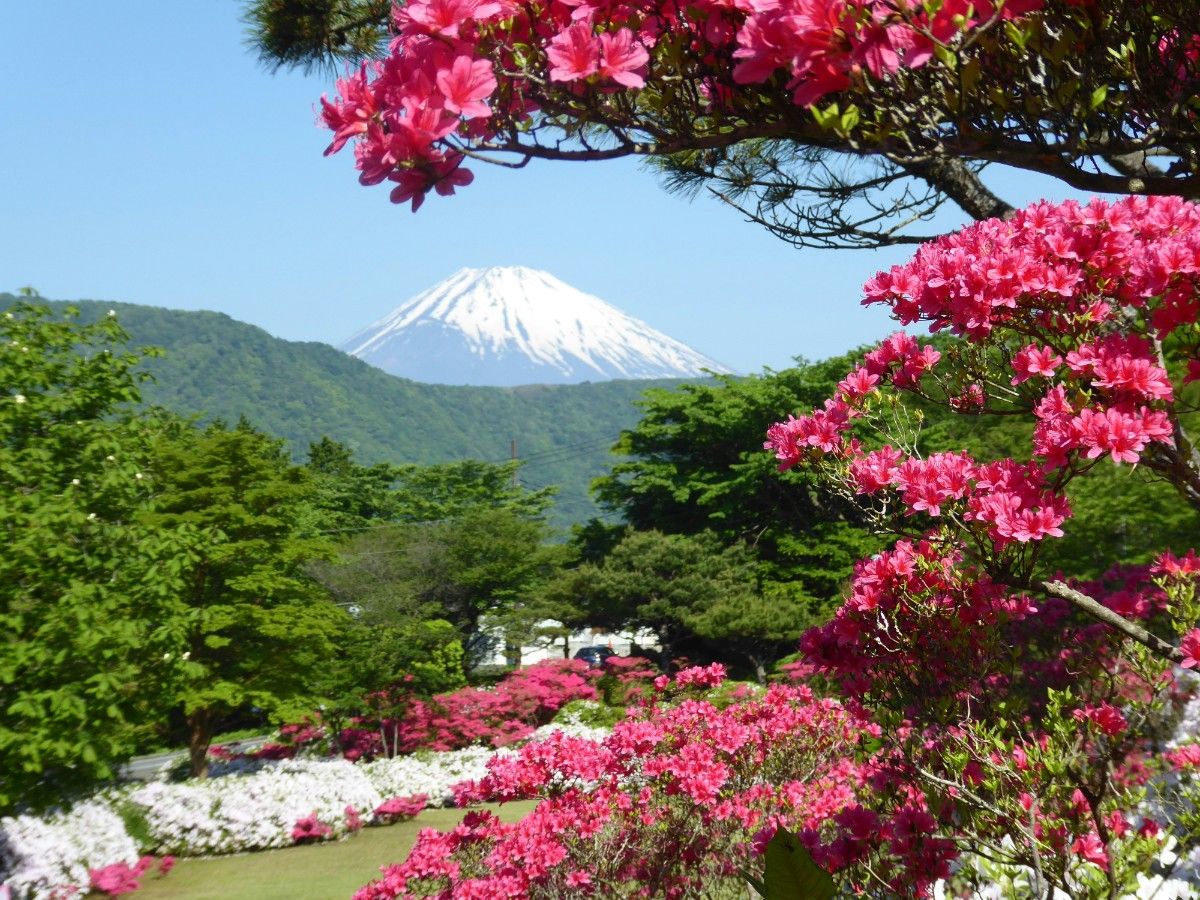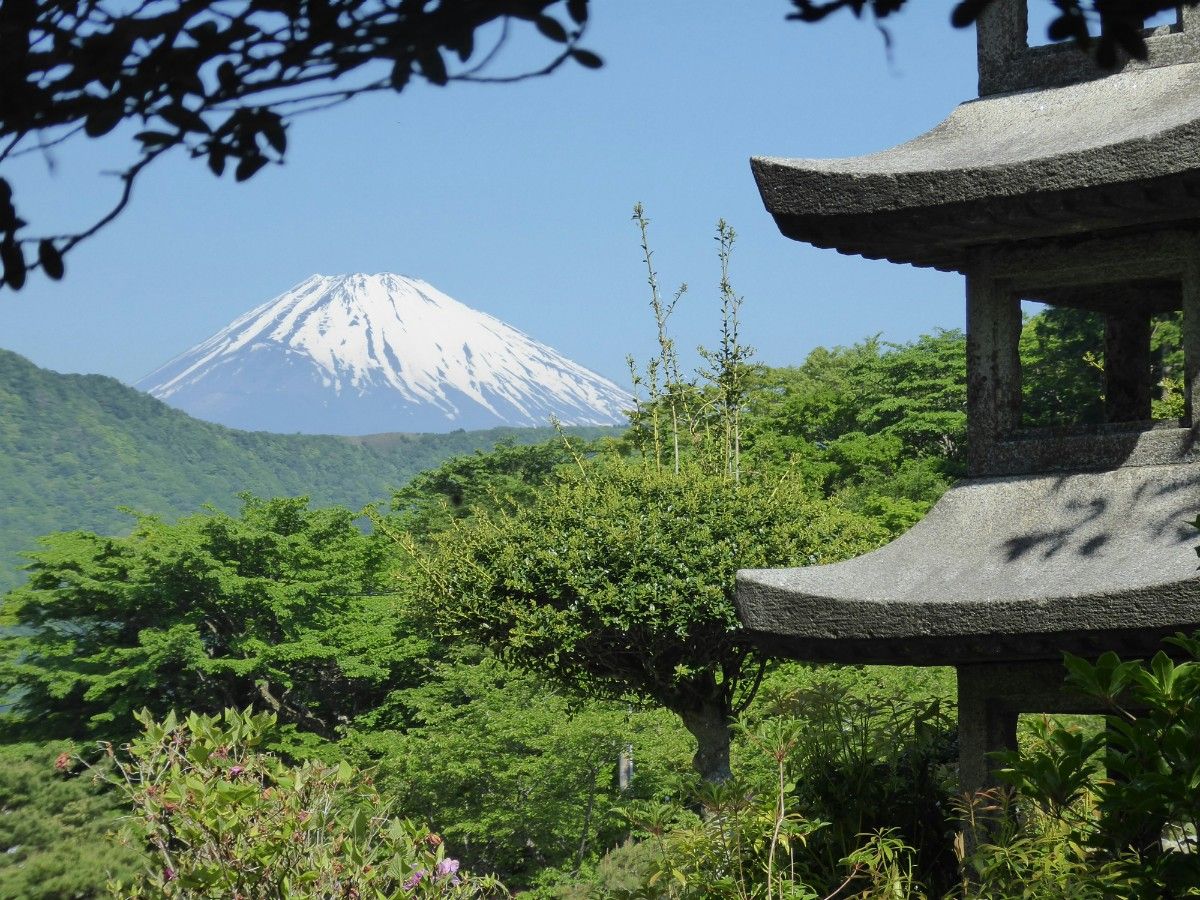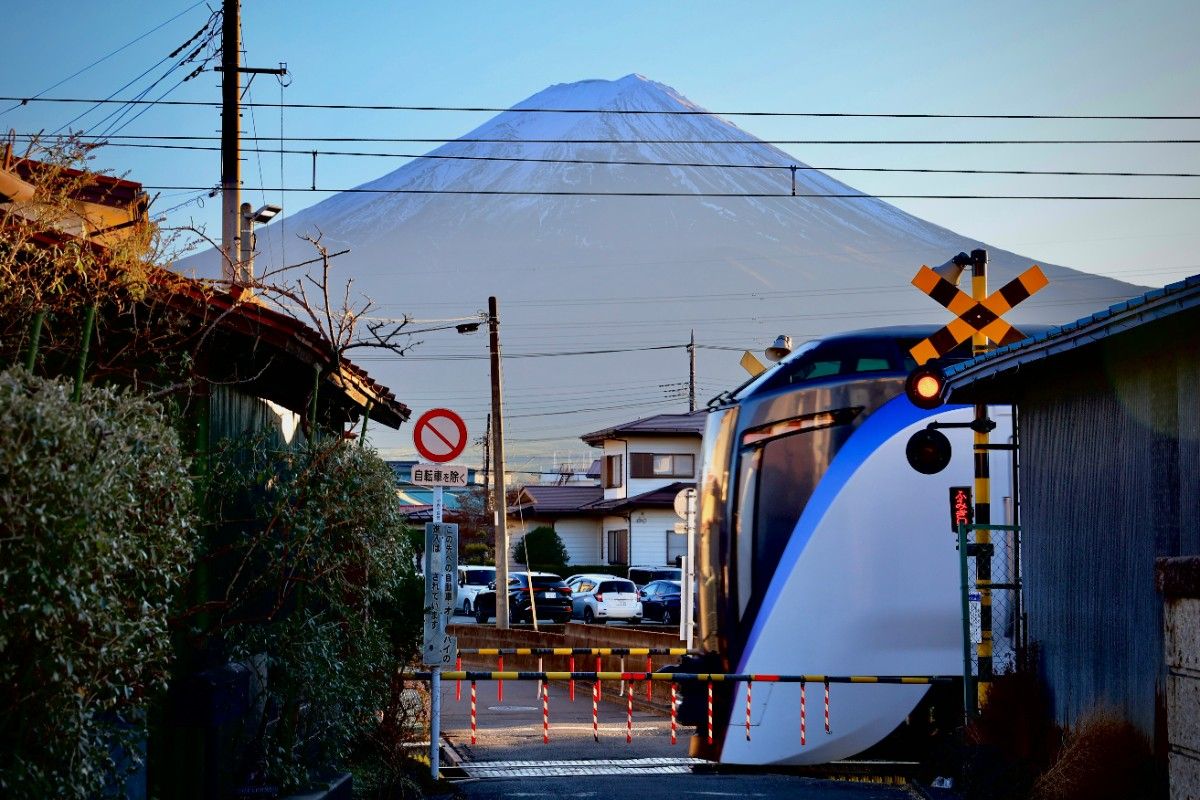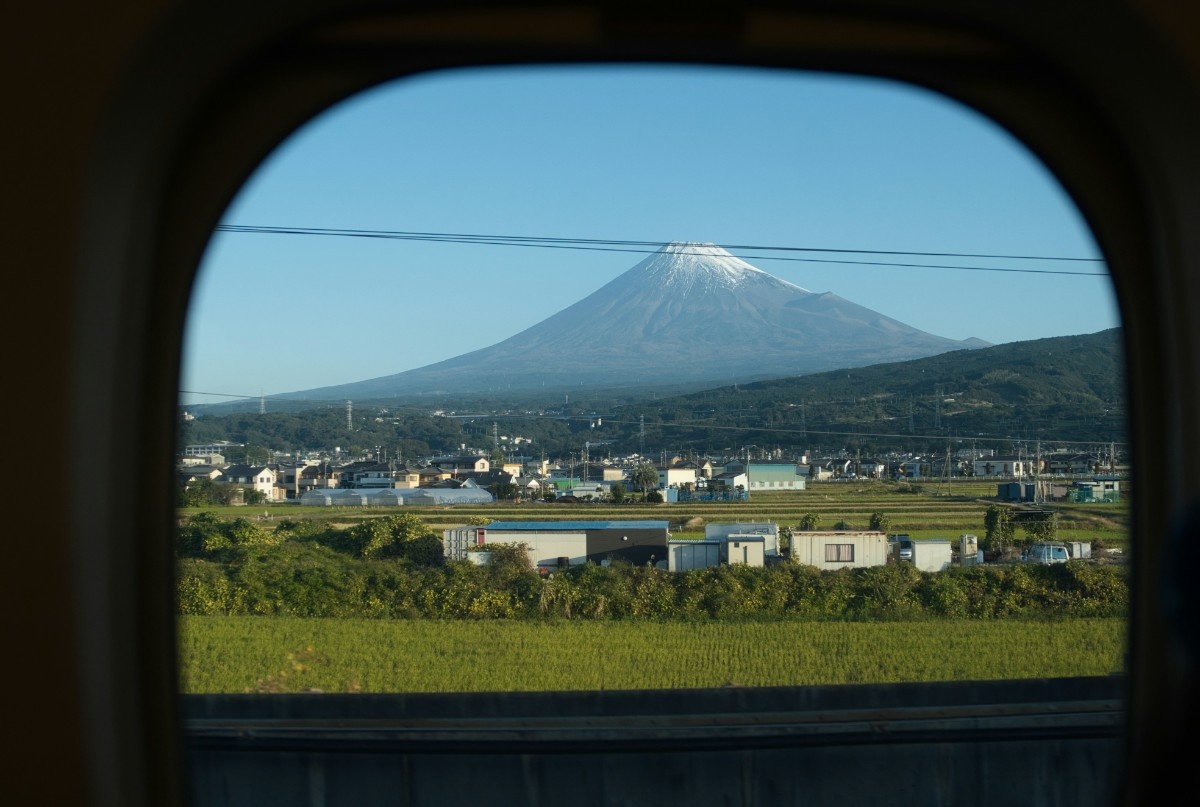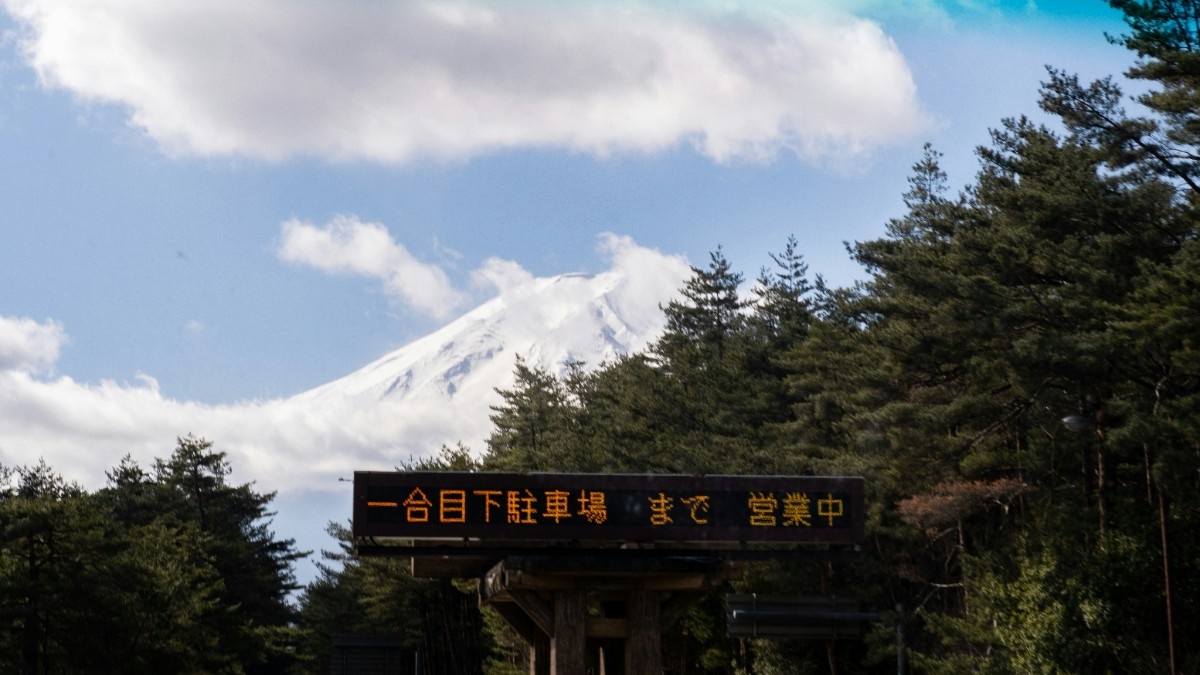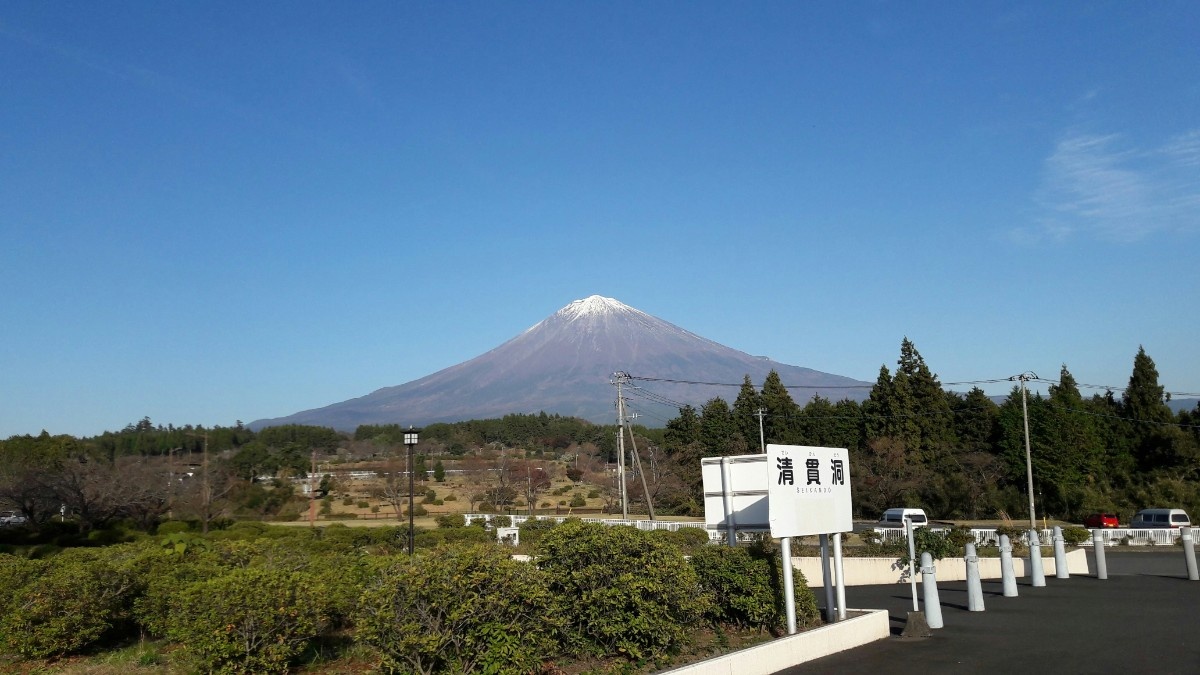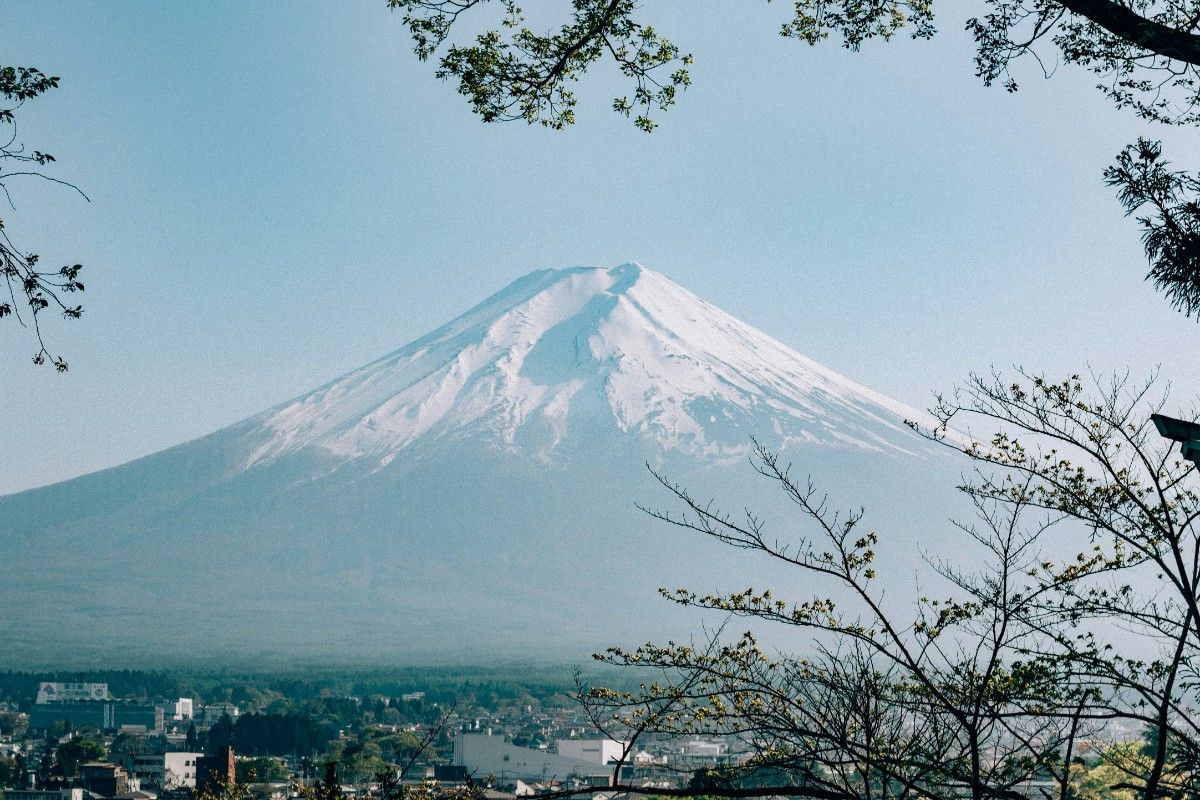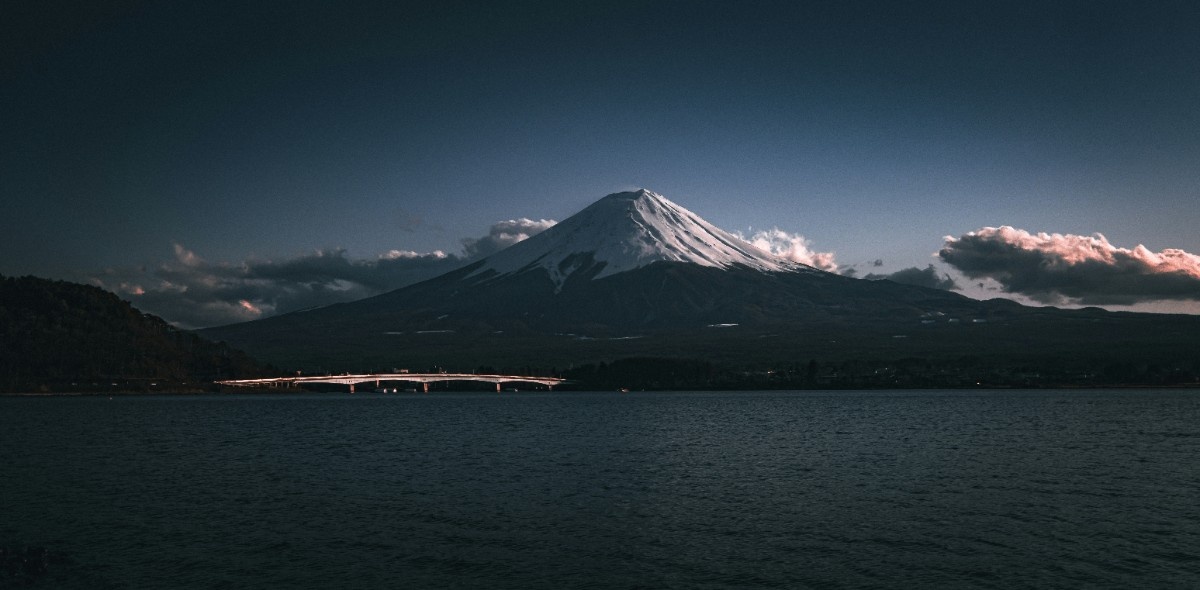The Majestic Mount Fuji: An Introduction to Japan's Iconic Peak
Historical Significance and Formation
Mount Fuji stands as Japan's most recognisable natural landmark, its perfectly symmetrical cone shape rising majestically above the surrounding landscape. The question of "where is Mount Fuji" often arises among prospective visitors, and its location between Shizuoka and Yamanashi prefectures makes it accessible from several major cities. At an impressive elevation of Mount Fuji reaching 3,776 metres (12,388 feet), this active stratovolcano has shaped Japanese culture, spirituality, and art for centuries.
The geological history of the mountain spans thousands of years, with its current form resulting from multiple volcanic activities. The last recorded Mount Fuji eruption occurred in 1707-1708, known as the Hoei eruption. Despite being classified as an active volcano, geological studies suggest minimal risk of imminent volcanic activity. Understanding these facts about Mount Fuji helps visitors appreciate its geological significance and the natural forces that created this magnificent peak.
The mountain's formation occurred in three distinct stages, each contributing to its current form. The first stage, known as Sen-komitake, began several hundred thousand years ago, followed by Old Fuji, and finally the development of New Fuji, which created the current summit. This layered history provides fascinating insights into the Earth's volcanic processes and continues to interest geologists worldwide.
Geographic Location and Accessibility
When discussing "where is Mount Fuji in Japan", its strategic location approximately 100 kilometres southwest of Tokyo makes it an accessible destination for both domestic and international visitors. The mountain serves as a natural boundary between Yamanashi and Shizuoka prefectures, offering various access points and viewing locations. This positioning has contributed significantly to its cultural and economic importance in Japanese society.
The surrounding region, known as the Fuji Five Lakes area, provides numerous vantage points for viewing the mountain. These lakes, formed by previous volcanic activity, offer perfect reflections of the mountain on calm days, creating iconic photographic opportunities. The accessibility of Mount Fuji from Tokyo has made it a popular destination for day trips and longer excursions, with well-developed transportation networks supporting tourism infrastructure.
The mountain's proximity to major population centres has influenced its role in Japanese society, making it a constant presence in daily life for millions of residents. This accessibility has contributed to its status as both a spiritual destination and a popular recreational site, supporting a variety of activities throughout the year.
Cultural and Environmental Significance
Mount Fuji holds profound cultural significance in Japanese society, reflected in countless artistic representations throughout history. Its perfect conical shape has inspired artists, poets, and writers for centuries, leading to its recognition as a UNESCO World Cultural Heritage site in 2013. This designation acknowledges both its physical beauty and its deep-rooted cultural importance.
The mountain plays a crucial role in Japan's ecosystem, influencing local weather patterns and supporting diverse wildlife populations. The various elevation zones create distinct habitats, from dense forests at lower levels to alpine environments near the summit. This environmental diversity contributes to the region's biodiversity and helps maintain ecological balance in central Japan.
The spiritual significance of Mount Fuji extends beyond its physical presence, with numerous shrines and temples dotting its slopes. These religious sites attract pilgrims and spiritual seekers throughout the year, maintaining ancient traditions while adapting to contemporary practices. The mountain's role in Shinto and Buddhist traditions highlights its enduring spiritual importance in Japanese culture.
Planning Your Mount Fuji Ascent: Essential Information for Climbers
Climbing Seasons and Route Selection
Understanding when to climb Mount Fuji significantly impacts the success and safety of your ascent. The official climbing season typically runs from early July to early September, when weather conditions are most favourable and mountain facilities operate at full capacity. During this period, the Mount Fuji hike attracts thousands of climbers from around the world, each seeking to reach the iconic summit.
Four main trails lead to the summit: Yoshida, Subashiri, Gotemba, and Fujinomiya. Each route offers unique characteristics and challenges, with the Yoshida trail being the most popular due to its accessibility and well-developed facilities. Understanding these options helps climbers choose the most suitable path based on their experience level and objectives.
The trails are divided into ten stations, with most climbers beginning their Mount Fuji ascent from the fifth station. This starting point provides a reasonable balance between accessibility and challenge, allowing climbers to complete the ascent within a typical timeframe while experiencing significant altitude gain.
Physical Preparation and Equipment
Preparing for a Mount Fuji trekking expedition requires careful consideration of physical fitness and equipment needs. Cardiovascular conditioning proves essential, as the significant altitude gain challenges even experienced hikers. Regular training hikes, particularly those involving elevation gain, help develop the necessary stamina for the ascent.
Essential equipment includes sturdy hiking boots, layered clothing suitable for varying temperatures, and appropriate rain gear. The mountain's weather can change rapidly, making versatile clothing options crucial for comfort and safety. Additional equipment such as hiking poles, headlamps for night climbing, and adequate water supplies supports a successful summit attempt.
Altitude considerations play a crucial role in summit success, with many climbers experiencing some degree of altitude-related discomfort. Understanding symptoms of altitude sickness and proper acclimatisation techniques helps manage these challenges effectively.
Weather Considerations and Safety Measures
Weather patterns on Mount Fuji can change dramatically, affecting climbing conditions and safety. Understanding weather forecasts and being prepared for sudden changes helps climbers make appropriate decisions about timing and equipment. Strong winds, rain, and temperature variations commonly occur, even during the official climbing season.
Safety measures include proper communication devices, basic first aid supplies, and knowledge of emergency procedures. Mountain huts along the routes provide emergency shelter and basic supplies, though advance reservations are recommended during peak season. Understanding evacuation procedures and emergency contact information provides additional safety assurance.
Monitoring weather conditions and maintaining flexibility in climbing plans helps ensure safety while maximising summit opportunities. Clear communication within climbing groups and with mountain facilities supports safe decision-making throughout the ascent.
The Cultural Significance of Mount Fuji in Japanese Heritage
Religious and Spiritual Importance
Mount Fuji holds profound spiritual significance in Japanese culture, serving as a sacred site for both Shinto and Buddhist traditions. The mountain's perfect symmetry and towering presence have long been interpreted as a manifestation of divine power, leading to its veneration as a sacred space where heaven and earth meet. Throughout history, religious practitioners have established numerous shrines and temples on and around the mountain, creating a network of spiritual sites that continue to attract pilgrims and seekers.
The practice of mountain worship, known as 'Fujiko', developed around Mount Fuji Japan during the Edo period, combining elements of Buddhist, Shinto, and folk traditions. These religious associations transformed the mountain into a pilgrimage destination, with different routes to the summit acquiring spiritual significance. The act of climbing became a form of religious practice, with each step towards the summit representing a step closer to enlightenment.
The mountain's role in Japanese spirituality extends beyond organised religion, influencing folk beliefs and cultural practices that persist to this day. Local communities maintain traditional ceremonies and festivals honouring the mountain's spirit, preserving ancient customs while adapting to contemporary life. This spiritual heritage contributes significantly to the mountain's designation as a UNESCO World Cultural Heritage site.
Artistic and Literary Legacy
Throughout Japanese history, Mount Fuji has served as an endless source of artistic inspiration, appearing in countless paintings, poems, and literary works. The mountain's iconic silhouette features prominently in traditional ukiyo-e woodblock prints, particularly in the famous works of Hokusai and Hiroshige. These artistic representations have helped establish Mount Fuji as a global symbol of Japanese cultural identity.
The mountain's presence in literature spans centuries, from classical poetry to contemporary novels. Traditional waka and haiku poets frequently referenced Mount Fuji in their works, using its enduring presence as a metaphor for permanence, beauty, and the relationship between humans and nature. This literary tradition continues to influence modern Japanese writers, who find new ways to interpret the mountain's significance.
Visual artists working in various mediums continue to draw inspiration from the mountain, creating contemporary interpretations that bridge traditional and modern artistic expressions. This ongoing artistic engagement ensures that Mount Fuji remains relevant in current cultural discourse while maintaining its historical significance.
Modern Cultural Impact
In contemporary Japanese society, Mount Fuji maintains its cultural importance while acquiring new meanings and associations. The mountain appears frequently in popular media, from films and television programmes to advertising and corporate logos. This modern cultural presence helps maintain the mountain's relevance for younger generations while reinforcing its status as a national symbol.
The tourism industry has developed around the mountain, creating new cultural practices and traditions. While some critics argue that commercialisation threatens traditional values, others see it as a natural evolution of the mountain's cultural significance. The challenge lies in balancing preservation of cultural heritage with contemporary needs and interests.
The mountain's image serves as a powerful marketing tool, appearing on everything from consumer products to regional branding initiatives. This commercial use of Mount Fuji's imagery reflects its enduring appeal while raising questions about the relationship between cultural heritage and economic development.
Mount Fuji Trek: Preparing for a Successful Summit Attempt
Physical and Mental Preparation
Successfully completing a Mount Fuji summit attempt requires comprehensive preparation addressing both physical and mental aspects. Physical conditioning should begin several months before the planned climb, focusing on cardiovascular endurance and leg strength. Regular hiking practice, particularly on terrain with significant elevation gain, helps develop the specific fitness needed for the ascent.
Mental preparation proves equally important, as the challenges of high altitude and potentially adverse weather conditions require strong psychological resilience. Understanding what to expect during the climb, including potential difficulties and discomforts, helps climbers maintain motivation and make appropriate decisions during their ascent. Developing a positive mindset while maintaining realistic expectations supports successful summit attempts.
The combination of physical and mental preparation must include realistic assessment of personal capabilities and limitations. This understanding helps climbers choose appropriate routes and timing for their Mount Fuji ascent, increasing chances of success while maintaining safety.
Technical Skills and Equipment
Though climbing Mount Fuji doesn't require technical mountaineering skills during the official season, basic hiking competence and proper equipment prove essential. Understanding how to use hiking poles, manage layered clothing systems, and navigate marked trails enhances safety and comfort during the ascent. Familiarity with basic altitude sickness prevention and treatment also proves crucial.
Essential equipment includes sturdy hiking boots, appropriate clothing layers, rain gear, and navigation tools. Each item serves specific purposes, from maintaining comfort in changing weather conditions to ensuring safety during the trek. Proper equipment selection and familiarity with gear use significantly impact the climbing experience.
The importance of proper footwear cannot be overstated, as the volcanic terrain presents unique challenges. Boots should provide adequate ankle support and protection while maintaining comfort during the long ascent and descent. Testing all equipment before the climb ensures familiarity and identifies any potential issues.
Route Planning and Timing
Successful completion of the Mount Fuji trekking experience requires careful consideration of route selection and timing. Each of the four main trails offers distinct advantages and challenges, making route selection an important decision based on individual circumstances and objectives. Understanding the characteristics of each trail helps climbers choose the most appropriate path for their abilities and goals.
Timing considerations include both season selection and specific climbing schedule. Most climbers aim to reach the summit for sunrise, known as 'goraiko', requiring careful planning of ascent timing and rest stops. This planning must account for personal climbing pace, expected weather conditions, and mountain hut availability.
The popular strategy of starting in the afternoon, staying overnight in a mountain hut, and continuing to the summit before dawn requires advance planning and reservations. Understanding the timing requirements for this approach helps climbers prepare appropriately and maximise their chances of summit success.
Scientific and Environmental Aspects of Mount Fuji
Geological Formation and Volcanic Activity
The formation of Mount Fuji represents a fascinating geological process spanning hundreds of thousands of years. As Japan's highest peak, with a recorded Mount Fuji height of 3,776 metres, the mountain consists of distinct layers formed through multiple volcanic episodes. Understanding these layers provides crucial insights into the region's geological history and volcanic processes that continue to shape the Japanese archipelago.
The most recent Mount Fuji eruption occurred in 1707-1708, known as the Hoei eruption, which significantly impacted the mountain's eastern flank. While currently classified as active, continuous monitoring by scientific institutions provides early warning of any potential volcanic activity. This monitoring includes measurement of seismic activity, ground deformation, and gas emissions, contributing to both public safety and scientific understanding.
The mountain's internal structure reveals a complex history of volcanic activity, with different types of volcanic materials creating distinct layers. These materials, primarily basaltic and andesitic in composition, tell the story of how the mountain evolved over time. Scientific studies of these layers contribute to understanding volcanic processes and improving prediction capabilities for future volcanic events.
Ecological Systems and Biodiversity
The varying elevations of Mount Fuji create distinct ecological zones, each supporting unique plant and animal communities. These zones range from dense forests at lower elevations to alpine environments near the summit, creating a remarkable study in vertical ecosystem distribution. The mountain's role in supporting biodiversity makes it an important site for ecological research and conservation efforts.
The mountain's influence extends beyond its immediate vicinity, affecting regional weather patterns and water systems. The snow-capped peak serves as a crucial water source, feeding numerous rivers and underground aquifers that sustain local communities. This hydrological system demonstrates the intricate connections between the mountain's physical presence and regional ecosystems.
Climate change impacts on Mount Fuji's ecosystems provide valuable data for understanding broader environmental changes. Observations of shifting vegetation zones, changing snow patterns, and wildlife distribution contribute to climate change research. These studies help scientists understand how mountain ecosystems respond to environmental changes and develop appropriate conservation strategies.
Environmental Conservation Efforts
Conservation initiatives around Mount Fuji focus on balancing environmental preservation with tourism access. The increasing number of visitors presents challenges for ecosystem protection, requiring careful management strategies. These efforts include trail maintenance, waste management systems, and visitor education programmes designed to minimise human impact on the mountain environment.
Scientific research supports conservation efforts by providing data on environmental conditions and changes. Regular monitoring of key indicators helps managers identify potential problems and develop appropriate responses. This science-based approach to conservation ensures that management decisions reflect current environmental conditions and needs.
The involvement of local communities in conservation efforts proves essential for long-term success. Traditional knowledge combined with scientific understanding creates effective conservation strategies that consider both environmental and cultural values. This integrated approach helps ensure the mountain's preservation for future generations.
Exploring Mount Fuji from Tokyo: Day Trips and Viewing Locations
Transportation Options and Travel Planning
Accessing Mount Fuji from Tokyo offers various transportation options, each providing different advantages for visitors. The efficient Japanese railway system connects Tokyo with several gateway towns around the mountain base, while direct bus services offer convenient access to popular viewing locations and fifth stations during climbing season.
Planning transportation requires consideration of seasonal factors and specific destination points. During peak season, additional services operate to accommodate increased visitor numbers, particularly to popular viewing locations and climbing trail heads. Understanding these seasonal variations helps visitors plan efficient and enjoyable day trips.
Advance booking often proves essential during peak periods, particularly for direct services to climbing stations. Various combination tickets and passes offer cost-effective options for visitors planning to explore multiple locations around the mountain. Knowledge of these options helps visitors maximise their time and budget while exploring the region.
Prime Viewing Locations and Photography Points
The quest to capture perfect views of Mount Fuji leads visitors to numerous renowned viewing locations. The Fuji Five Lakes region, particularly Lake Kawaguchiko, offers some of the most accessible and dramatic views of the mountain. These locations provide opportunities for both casual sightseeing and serious photography throughout the year.
Popular viewing points include the Chureito Pagoda in Fujiyoshida City, offering iconic views combining traditional architecture with the mountain backdrop. The observation deck at Arakurayama Sengen Park provides panoramic views that attract photographers from around the world. Understanding the best timing for visits to these locations helps visitors capture memorable images.
Seasonal considerations significantly impact viewing experiences, with different locations offering optimal views during different times of year. Winter often provides the clearest views due to reduced atmospheric humidity, while spring offers opportunities to capture the mountain framed by cherry blossoms. Knowledge of these seasonal patterns helps visitors plan their trips for optimal viewing conditions.
Cultural Attractions and Local Experiences
Exploring the areas around Mount Fuji reveals numerous cultural attractions complementing the natural beauty. Traditional towns in the region offer insights into local lifestyle and customs, with many maintaining centuries-old architectural styles and crafting traditions. These cultural elements enhance the visitor experience beyond simple mountain viewing.
Local museums and visitor centres provide detailed information about Mount Fuji facts and regional history. These facilities offer educational programmes and interactive exhibits explaining various aspects of the mountain's natural and cultural significance. Understanding these educational resources helps visitors appreciate the deeper context of their mountain experience.
Seasonal festivals and events in the region provide opportunities to experience local culture while enjoying mountain views. These celebrations often combine traditional customs with contemporary entertainment, creating memorable experiences for visitors. Knowledge of these events helps visitors plan trips that include both natural and cultural experiences.
Seasonal Considerations and Weather Patterns at Mount Fuji
Summer Climbing Season Characteristics
The official climbing season at Mount Fuji typically runs from early July through early September, representing the most favourable period for attempting the ascent. During these months, the elevation of Mount Fuji experiences relatively stable weather patterns, though conditions can still change rapidly. Mountain facilities operate at full capacity during this period, providing essential services for the thousands of climbers attempting to reach the summit.
Summer weather patterns typically feature warmer temperatures at the base, gradually decreasing with elevation gain. However, even during this optimal season, temperatures at the summit can drop significantly, particularly during early morning hours when many climbers arrive for sunrise views. Understanding these temperature variations helps climbers prepare appropriate clothing and equipment for their ascent.
The summer season also experiences the highest visitor numbers, particularly during Japanese holidays and weekends. This increased activity requires advance planning for mountain hut accommodations and consideration of crowd management during the climb. While the summer season offers the most accessible climbing conditions, proper preparation remains essential for a safe and enjoyable experience.
Off-Season Conditions and Viewing Opportunities
Outside the official climbing season, Mount Fuji presents different challenges and opportunities for visitors. While winter climbing requires technical skills and equipment, the season offers some of the clearest viewing conditions from surrounding areas. The cold, dry winter air often provides exceptional visibility, making this season ideal for photography and appreciation of the mountain's majestic profile.
Spring and autumn present transitional conditions, with each season offering unique perspectives on the mountain. Spring brings the famous cherry blossom season to lower elevations, creating iconic viewing opportunities combining Mount Fuji Japan's snow-capped peak with flowering trees. Autumn colours in surrounding forests provide equally spectacular scenery, though weather conditions can be more variable.
Understanding seasonal access restrictions and facility closures proves crucial for off-season visitors. While the mountain remains visible year-round, access to higher elevations becomes limited outside the official climbing season. This limitation affects both transportation options and available services in the mountain area.
Weather Monitoring and Forecasting
Accurate weather monitoring plays a crucial role in planning any Mount Fuji activity, whether climbing during the official season or viewing from surrounding areas. Modern forecasting systems provide detailed predictions for different elevation zones, helping visitors make informed decisions about their mountain activities. Understanding how to access and interpret these forecasts proves essential for both safety and enjoyment.
Local weather patterns around the mountain can differ significantly from conditions in surrounding regions. The mountain's size and elevation create unique meteorological effects, including rapid weather changes and localised conditions. Knowledge of these patterns helps visitors prepare for potential weather variations during their mountain experience.
The development of weather monitoring systems continues improving forecast accuracy and accessibility. Various online resources and mobile applications provide real-time weather updates and forecasts specifically for Mount Fuji and surrounding areas. Understanding how to use these resources effectively supports better planning and decision-making.
Practical Tips and Safety Considerations for Mount Fuji Visitors
Essential Safety Protocols
Safety considerations for any Mount Fuji trek begin with understanding and following established protocols. These guidelines, developed through years of experience managing visitor safety, address various aspects of mountain activities. From proper equipment use to emergency procedures, comprehending these protocols forms the foundation of safe mountain experiences.
The importance of proper preparation cannot be overstated, particularly for those attempting to climb Mount Fuji. This preparation includes both physical conditioning and mental readiness for the challenges ahead. Understanding personal limitations and maintaining awareness of changing conditions helps prevent many common safety issues.
Emergency response systems operate throughout the mountain area, with specific procedures for different types of incidents. Knowledge of these systems, including emergency contact numbers and evacuation procedures, provides crucial support for visitor safety. Regular updates to safety protocols reflect changing conditions and emerging challenges.
Health and Altitude Considerations
Managing health risks during mountain activities requires understanding both personal health conditions and environmental challenges. The significant elevation gain when climbing Mount Fuji can affect visitors differently, with altitude-related symptoms possible even for experienced mountaineers. Recognition of early warning signs allows for appropriate responses before serious problems develop.
Proper hydration and nutrition play crucial roles in maintaining health during mountain activities. The combination of physical exertion and altitude increases both fluid and energy requirements. Understanding these needs and planning appropriate supplies helps maintain health and energy levels throughout mountain activities.
Medical facilities and support services operate at various locations around the mountain, particularly during the climbing season. Knowledge of these resources, including their locations and operating hours, provides important backup for health-related issues. Preparation should include basic first aid supplies and any personal medications needed.
Equipment and Preparation Guidelines
Appropriate equipment selection significantly impacts both safety and comfort during Mount Fuji activities. While specific needs vary based on planned activities and seasons, certain essential items prove necessary for all mountain visitors. Understanding these requirements helps ensure adequate preparation for mountain conditions.
Proper clothing systems, based on layering principles, provide flexibility for changing conditions. This approach allows adjustment to different weather conditions and activity levels throughout the visit. Selection of appropriate footwear proves particularly important, as proper foot protection and support significantly affect safety and comfort.
Regular equipment maintenance and checks ensure reliability when needed. This maintenance includes both pre-trip inspection and ongoing monitoring during use. Understanding proper care and use of equipment helps prevent equipment-related problems during mountain activities.
Related Articles

Let us know you agree to cookies
We use marketing, analytical and functional cookies as well as similar technologies to give you the best experience. Third parties, including social media platforms, often place tracking cookies on our site to show you personalised adverts outside of our website.
We store your cookie preferences for two years and you can edit your preferences via ‘manage cookies’ or through the cookie policy at the bottom of every page. For more information, please see our cookie policy.
